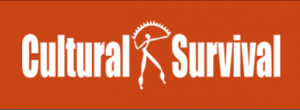This article from the Journal of Teacher Education for Sustainability is hosted on the De Gruyter Publishing site. Chandra describes both Western and Indigenous views on sustainable development in education and argues for the importance of incorporating traditional views in mainstream classrooms. The author then attempts to link the challenges facing Indigenous views on sustainability to pedagogical approaches to sustainability education. The article uses a number of case studies to argue that integrating traditional approaches into education is critical not just for achieving goals of sustainability but for protecting the disappearance of Aboriginal culture in mainstream learning environments.
http://www.degruyter.com/view/j/jtes.2014.16.issue-1/jtes-2014-0007/jtes-2014-0007.xml
Module 4 Entry 5
 Cultural Survival
Cultural Survival